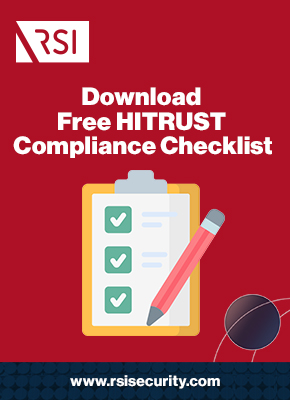When we see other drivers on the road, we tend to assume they’re all licensed, insured, and level-headed. Until they prove otherwise in front of us, we take it for granted that everyone’s an excellent driver — you know, like us.
But when we show up at a doctor’s office or share payment details for a recent medical procedure, we assume healthcare professionals are following all the best practices concerning the security of that data. But we go to the pharmacy because we need to fill a prescription, not because they’re reputed for their cybersecurity. How do businesses call attention to their cybersecurity mindfulness, and how do consumers make the best choice when it comes to matters of handling their personal data?
There’s a simple answer already out there: they look for HITRUST compliance.
The HITRUST Common Security Framework (CSF for short) is the most comprehensive and widely used security framework in the US healthcare system.
As a roadmap of cybersecurity standards, it was developed and maintained by healthcare industry experts who sought to design an objective and measurable way to manage healthcare security risks. It’s the playbook on how to improve your business’s data management practices, and is supervised by the HITRUST Alliance, a collection of professionals with relevant opinions and insight that shape cybersecurity policy.
Assess your HITRUST compliance
As the healthcare space is uniquely dependent on sharing and transmitting sensitive, identifiable information in order to function, it needs a clear standard to adhere to in order to protect patients and business ops alike. Medicine is already rich with standards needing compliance (take HIPAA, for example). Similar cybersecurity standards ought to ensure similar levels of protection — healthcare data plays a central role in executing healthcare functions, so it ought to be protected like the goldmine it is.
A HITRUST certification is effectively a seal of approval on how a business handles its data and runs its cybersecurity. A vote of confidence from the HITRUST Alliance is only possible after the company in question has put in a lot of legwork and self-assessments: the standard is high to meet, and that’s why it’s catching on among healthcare operations.

Organizations that pursue HITRUST framework certification improve their security posture over time.
The first step to solving a problem is identifying it. When businesses consciously prioritize improved cybersecurity and pursue HITRUST certification as a means to get there, the needle moves significantly for improvement. It changes the mindset of the company, regardless of the specific niche they serve.
In the course of achieving this certification, many employee actions are filtered through the lens of “how does this hurt or help the organization’s cybersecurity?” for the first time. Workers begin to see where they fit in relation to a company’s processes and the sensitive data that enables their work. They better understand the role they play as it pertains to gathering data and keeping it safe, and these are paramount in healthcare.
If you aren’t willing to protect your patients’ personal data, then you probably shouldn’t be operating in the healthcare industry. Keeping this category of personal health data more secure and private should be the leading priority for organizations serving people here.
The HITRUST CSF is a risk-based model.
In other words, this is a compliance-based approach to risk management — those organizations that can satisfactorily check all the boxes get to call themselves compliant. This lets companies address individual known risks that are already inherent within their industry first.
Frameworks of this caliber are designed to be able to clear against a wide variety of potential cyberattacks. By taking the best of what we know the bad guys can do to harm, you can design the requisite security requirements necessary to sufficiently push back. With an overwhelming majority of those known problems covered, you have a stronger working foundation for preparing against unforeseen problems or other residual risks.
So HITRUST certification won’t necessarily account for every conceivable infosec outcome, but it signifies that you’ve established a certain base layer of valuable protection.
HITRUST compliance is great for healthcare organizations because it helps protect sensitive data.
From hospitals and pharmacies to insurance firms and doctors’ offices, healthcare entities need investment in and education on cybersecurity.
A comprehensive study by the Clark School at the University of Maryland found that the world’s cybercriminals are gaining access to other people’s internet-connected devices every 39 seconds on average. That’s rather a lot, and the bad guys are especially motivated to engage in this behavior when it comes to penetrating healthcare organizations’ hefty stores of valuable data. But HITRUST compliance pushes back against the tactics these cyber criminals might employ.
When someone mentions that their business is HITRUST CSF certified, people across healthcare will know what that means. Everyone who achieves such a certification has gone through the same rigorous process.

Digital healthcare is on the rise, making the space more susceptible to cyberattacks.
The internet is a radical transformational force and perhaps the lead actor in human history for the past 20 years. But the healthcare industry is so bureaucratic and resistant to change that we still have yet to find the end of how the internet ought to interact with medical information. However it actually operates, we only know that we want it to operate securely.
Digital healthcare startups are beginning to profligate, and funding in these smaller, more agile businesses is only expected to increase. Emergent healthcare operations are going to use similar internet technologies to deliver more and more value to their customers, and this only spells more opportunity for malicious hackers.
Unless that startup has taken the forward-looking step of certifying its cybersecurity practices.
HITRUST certification is a little bit like a driver’s license for cybersecurity. It demonstrates that you’ve achieved a certain level of competency with driving and are fit to be trusted with the associated tools, like car keys and a car. But in the world of healthcare, this “driver’s license” says something more closely approximating, “Share your medical data with us without fear. We take pride in our security standards.” Contact RSI Security today to get started.
Download Our HITRUST Compliance Checklist
Assess where your organization currently stands with being HITRUST compliant by completing this checklist. Upon filling out this brief form you will receive the checklist via email.

